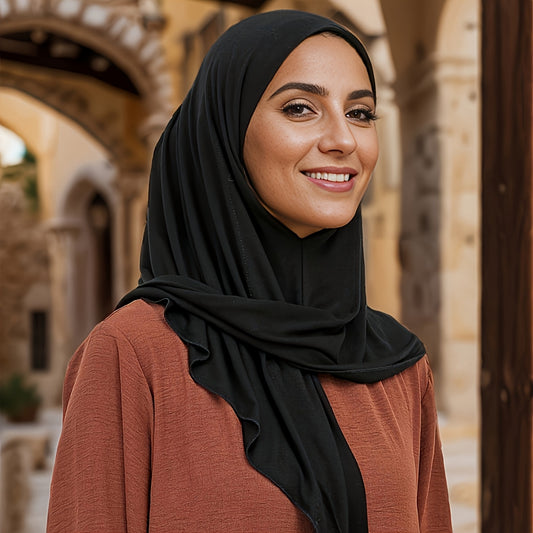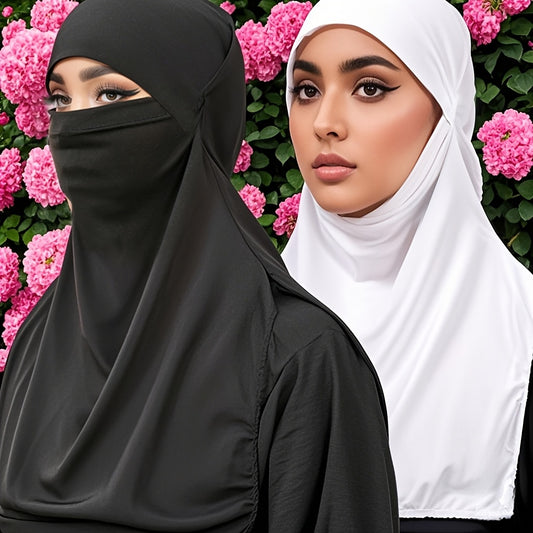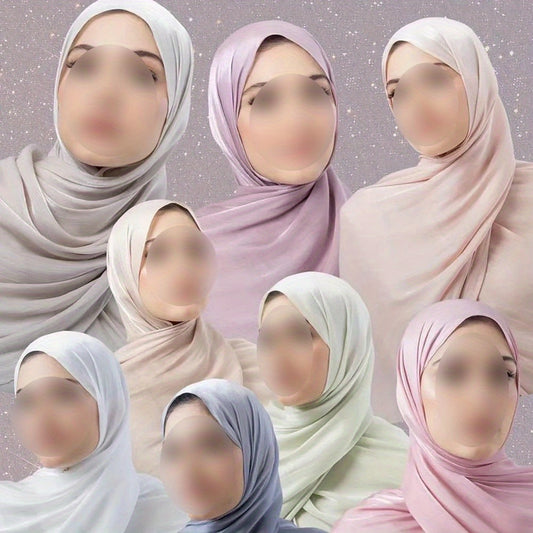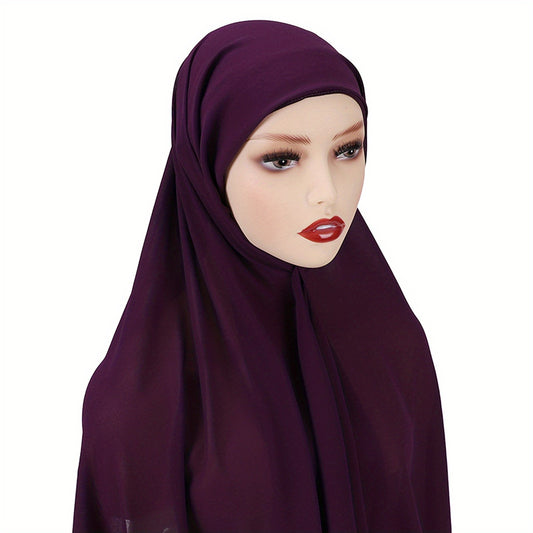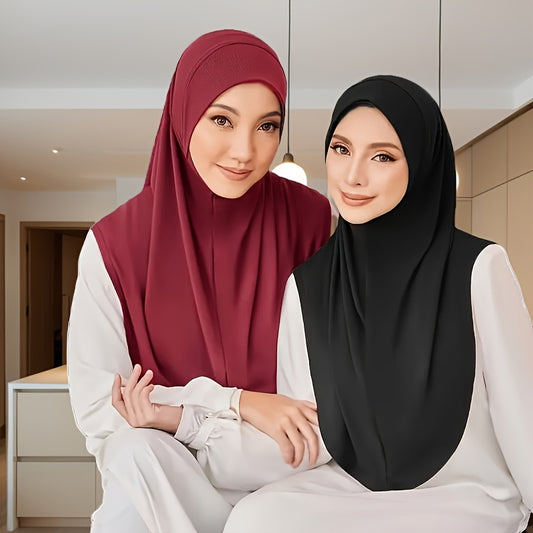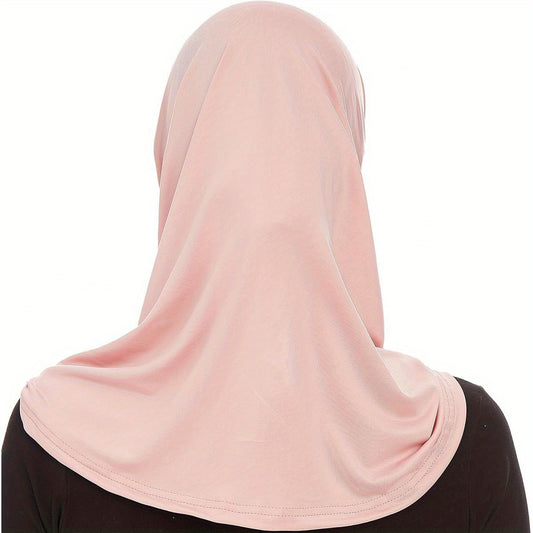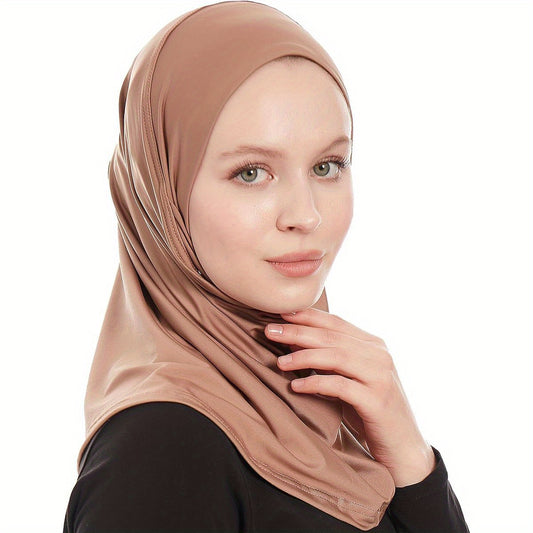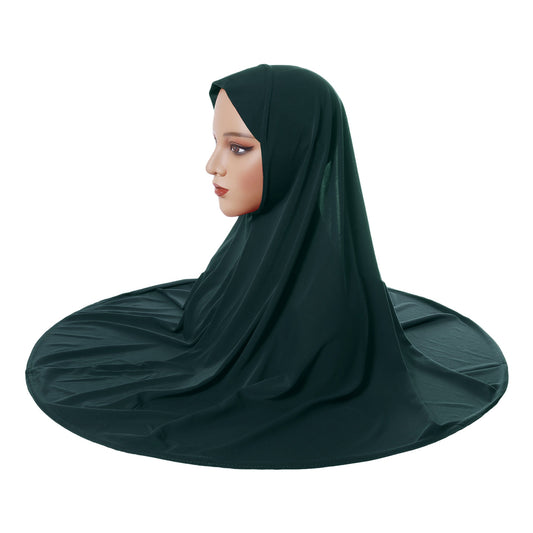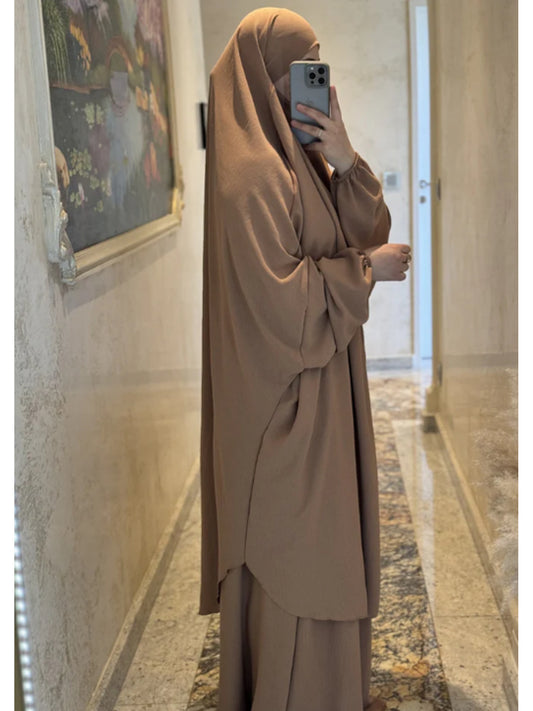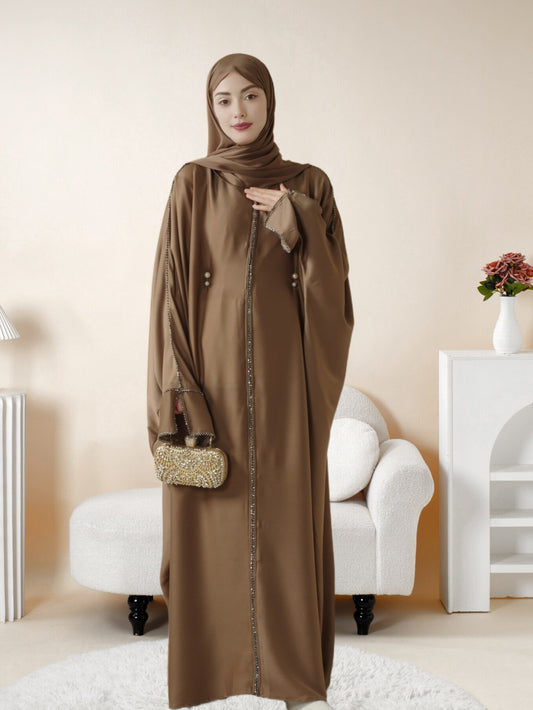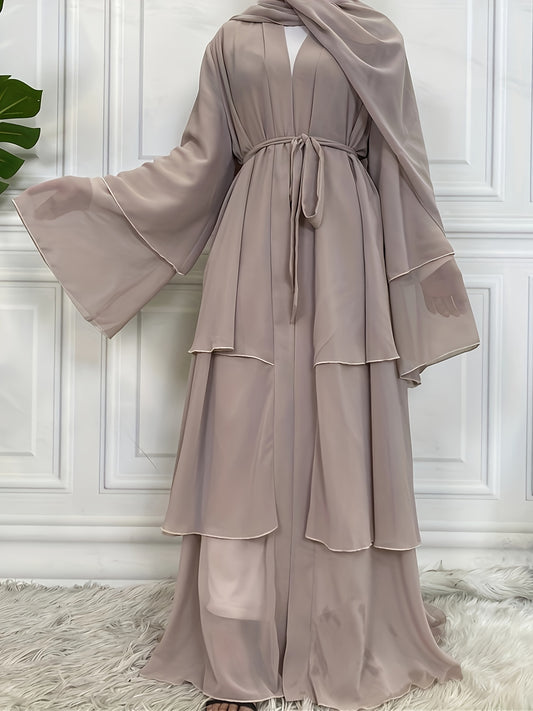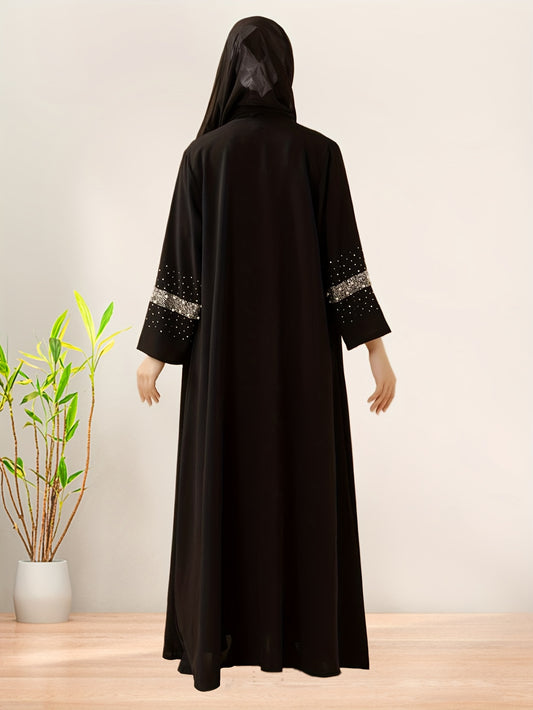The Complete Guide To Hijab Fabrics
Introduction To Hijab Fabrics
The fabric of a hijab is not merely a technical detail—it is the foundation of its beauty, comfort, and purpose. The type of fabric dictates how a hijab drapes, how breathable it feels, and how versatile it is across different occasions. More than an accessory, hijabs embody cultural heritage and personal identity, and fabric choices directly influence how women experience modest fashion in everyday life.
With the global expansion of modest wear, hijab fabrics have diversified to meet every lifestyle need. Lightweight chiffons serve elegance at formal events, breathable cottons ensure comfort during summer, and stretch-friendly jerseys allow effortless wear for busy routines. By understanding fabrics in depth, women gain the ability to curate hijab collections that reflect both practicality and sophistication.
This guide explores the textures, functions, cultural associations, and sustainability aspects of hijab fabrics, providing a comprehensive view of how these materials shape the timeless elegance of the hijab.
Historical Evolution Of Hijab Fabrics
The earliest hijabs were shaped by local resources. In desert regions, breathable cottons shielded women from heat while providing coverage. In colder climates, wool and heavier fabrics offered warmth and durability. Silk hijabs gained popularity in imperial courts, symbolizing luxury and status, while embroidered textiles reflected regional craftsmanship.
As trade routes expanded, fabrics like chiffon and satin traveled across continents, allowing women to adopt new textures. Over time, hijab fabrics evolved from strictly utilitarian choices into aesthetic ones, reflecting personal style and the global exchange of fashion influences. Today, hijabs are available in fabrics that balance cultural authenticity with modern adaptability, reflecting centuries of innovation.
Core Hijab Fabrics And Their Features
Cotton
Cotton remains the most popular everyday hijab fabric. It is breathable, lightweight, and durable, making it ideal for warm climates and daily wear. Cotton hijabs provide a matte finish and non-slip quality, which simplifies styling for beginners.
Best For: Work, school, casual settings, and summer.
Advantages: Breathable, easy to wash, and long-lasting.
Limitations: Less formal compared to silk or chiffon.
Chiffon
Chiffon hijabs are known for their airy, elegant drape. They are semi-sheer and require an underscarf or pins for secure styling. Their delicate flow makes them a favorite for formal occasions, evening gatherings, and weddings.
Best For: Festive and formal occasions.
Advantages: Lightweight, graceful, and sophisticated.
Limitations: Slippery, requiring more effort to secure.
Jersey
Jersey hijabs are stretchable and fuss-free. They stay in place without pins, making them perfect for active lifestyles. Their soft texture provides all-day comfort, while their adaptability ensures they can transition from casual to semi-formal settings with ease.
Best For: Workouts, travel, casual and professional wear.
Advantages: Stretchable, comfortable, and low-maintenance.
Limitations: Slightly heavier than chiffon or silk.
Silk
Silk hijabs represent luxury and refinement. Known for their luminous finish, they elevate any outfit into an elegant statement. Silk’s natural sheen makes it a popular choice for weddings and formal events. However, they demand delicate care to preserve their beauty.
Best For: Weddings, gala events, luxury styling.
Advantages: Luxurious, smooth, and timelessly elegant.
Limitations: Requires delicate handling and dry cleaning.
Linen
Linen hijabs bring a textured sophistication. Highly breathable, they are best suited for warmer months. Linen offers an organic, earthy appeal, perfect for minimalist wardrobes or eco-conscious styling.
Best For: Summer outings, casual chic.
Advantages: Breathable, eco-friendly, and timeless.
Limitations: Prone to wrinkles, requiring frequent ironing.
Satin
Satin hijabs are smooth and glossy, offering a polished finish that mimics silk at a more affordable price. They are ideal for semi-formal and formal wear, adding glamour without the high-maintenance care of pure silk.
Best For: Parties, formal dinners, semi-formal events.
Advantages: Affordable elegance, luminous finish.
Limitations: Can slip easily, needing careful styling.
Fabric Selection Based On Climate
Hijab fabrics must adapt to seasonal needs.
-
Summer: Cotton, chiffon, and linen ensure breathability.
-
Winter: Wool blends and heavier jerseys offer insulation.
-
All-Year Versatility: Silk and satin transition across seasons, particularly for formal settings.
Selecting fabric based on weather ensures comfort while maintaining modesty and style.
Cultural Relevance Of Fabric Choices
Fabric traditions carry cultural meaning. In South Asia, silk and chiffon dominate festive wardrobes, adorned with embroidery or beadwork. In the Middle East, lightweight cottons and breathable linens reflect practicality for hot climates. Western modest fashion often favors jersey and satin for their contemporary appeal.
These variations highlight how hijab fabrics not only reflect practical needs but also embody cultural heritage and lifestyle preferences.
Styling Possibilities With Hijab Fabrics
The versatility of hijab fabrics allows women to adapt their look across occasions, seasons, and cultural settings. Each material offers a unique aesthetic when styled thoughtfully.
-
Cotton: Works well for everyday wraps and layered looks. Its matte finish pairs seamlessly with casual wear, providing a natural appearance without extra effort.
-
Chiffon: Perfect for draped styles. Its flowy quality makes it suitable for layered folds, turban wraps, and elegant pleats.
-
Jersey: Ideal for contemporary and practical styles. Its stretch allows for pinless wraps, sporty turbans, and comfortable drapes for travel.
-
Silk: Elevates traditional styles. A single silk hijab can be folded into sleek, minimalist wraps or adorned with jeweled pins for bridal settings.
-
Linen: Works best with relaxed, loose styles, often paired with minimalist outfits to enhance its organic texture.
-
Satin: Adds glamour to modern hijab styles, particularly in high-shine finishes that create a luxurious aura.
These styling approaches demonstrate that fabric is not only a matter of comfort but also a fashion statement, reflecting how hijabs can evolve from practical wear to artistic expression.
Professional And Social Roles Of Fabric
Fabric choices also shape the hijab’s role in professional and social spaces. In workplaces, fabrics such as cotton, jersey, or matte-finish chiffon offer subtle sophistication without drawing excess attention. Smooth lines and muted colors complement business attire, projecting professionalism.
In social gatherings, silk and satin hijabs often take center stage, chosen for their elegance. The fabric’s sheen adds celebratory refinement, aligning with cultural traditions that emphasize luxury during weddings, Eid celebrations, or formal dinners.
This duality highlights how hijab fabrics function as both wardrobe basics and elevated fashion pieces. Women can transition between work and festive contexts simply by switching fabric choices, underlining the hijab’s adaptability.
Maintenance And Care Of Hijab Fabrics
Preserving fabric quality ensures hijabs remain durable and beautiful. Each fabric demands specific care:
-
Cotton: Machine washable on gentle cycles, easy to iron, and highly resilient.
-
Chiffon: Best hand-washed in cold water; air-dry flat to avoid stretching.
-
Jersey: Requires minimal care; machine washable and wrinkle-resistant.
-
Silk: Demands the most attention. Dry cleaning or hand-washing with silk-friendly detergent maintains its sheen.
-
Linen: Wash in cold water and iron while damp to reduce wrinkles.
-
Satin: Hand-wash or gentle cycle with cold water to protect its glossy finish.
Using breathable storage bags and organizing fabrics by type prevents wear, while color grouping minimizes the risk of dye transfer. Proper care prolongs both vibrancy and functionality.
Sustainability In Hijab Fabrics
As modest fashion aligns with eco-conscious values, hijab fabrics have undergone sustainable transformations. Modern production emphasizes environmental responsibility:
-
Organic Cotton: Grown without pesticides, reducing environmental damage.
-
Plant-Based Linen: Naturally biodegradable, offering an eco-friendly option.
-
Recycled Polyester Blends: Repurposed textiles create hijabs with reduced environmental footprint.
-
Low-Impact Dyeing: Advanced dyeing methods conserve water and limit toxic runoff.
-
Slow Fashion Ethos: Encouraging customers to purchase durable fabrics ensures longevity over disposable trends.
Fabulive reflects these principles by offering ethically sourced hijab fabrics, ensuring customers align their modest fashion choices with sustainable practices.
Fabrics In Global Fashion And Media
Hijab fabrics play prominent roles in global fashion campaigns. Chiffon and silk appear in editorial spreads, draped gracefully for high-end photo shoots. Jersey hijabs are celebrated by sports brands, symbolizing inclusivity in athletic wear. Linen and cotton dominate eco-fashion collections, showcasing sustainability.
Media exposure has elevated the narrative of hijab fabrics as luxury textiles rather than purely functional pieces. Their presence on international runways and in digital influencer campaigns demonstrates their status as fashion icons within modest wear.
Long-Term Value Of Quality Fabrics
Investing in high-quality hijab fabrics offers substantial long-term benefits. Unlike cheaper alternatives that lose shape or color quickly, premium fabrics withstand repeated use, ensuring wardrobe stability.
-
Cotton And Jersey: Reliable for daily wear, providing cost-effective durability.
-
Silk And Satin: Though higher in cost, their timeless appeal justifies investment, especially for milestone events.
-
Linen: Represents sustainability and lasting elegance, aligning with eco-conscious values.
Women who build collections with quality fabrics enjoy both immediate comfort and lasting value, making hijabs treasured essentials rather than fleeting purchases.
Frequently Asked Questions
Which hijab fabric is most versatile?
Jersey offers the most versatility, adapting to casual, professional, and travel contexts.
Which fabric is best for hot climates?
Cotton and linen provide maximum breathability, making them ideal for summer.
Can chiffon hijabs be worn daily?
Yes, though they require underscarves and careful pinning to remain practical for everyday use.
Are silk hijabs worth the investment?
Absolutely. Their luxury finish and timeless elegance make them irreplaceable for special occasions.
Do fabrics influence how colors appear?
Yes. For example, silk enhances jewel tones, while cotton complements earthy shades.
How should hijabs be stored long-term?
Store them in breathable fabric bags or dedicated organizers, separated by fabric type and color.
The Role Of Fabulive In Hijab Fabrics
Fabulive’s hijab fabric collection reflects a philosophy of merging tradition with innovation. By curating materials ranging from breathable cottons to luxurious silks, Fabulive ensures women can select fabrics suited for every aspect of their lives. Fabulive’s commitment to ethical sourcing and sustainable production further positions its fabrics as both stylish and responsible choices.
Future Of Hijab Fabrics In Modest Fashion
The evolution of hijab fabrics points toward even greater innovation:
-
Smart Textiles: Fabrics that regulate temperature or resist stains.
-
Eco-Engineered Fibers: Biodegradable synthetics replicating silk and chiffon.
-
Customized Production: AI-driven tools offering personalized fabric recommendations.
As these advancements unfold, hijab fabrics will continue shaping modest fashion’s future—balancing tradition, technology, and sustainability.
Customer Reviews
• “The chiffon hijab I purchased was light, breathable, and looked stunning at an evening event.” – Layla, UK ⭐⭐⭐⭐⭐
• “I wear jersey hijabs daily, and the one from Fabulive is by far the softest and most comfortable.” – Amina, Canada ⭐⭐⭐⭐
• “The silk hijab was pure luxury. I wore it at my wedding, and it elevated my entire outfit.” – Noor, UAE ⭐⭐⭐⭐⭐
• “The cotton hijab is perfect for summer. Easy to wash and long-lasting.” – Sofia, USA ⭐⭐⭐⭐
• “I was impressed with the linen hijab’s quality. It’s breathable and sustainable, which I appreciate.” – Yasmin, Australia ⭐⭐⭐⭐⭐
• “The satin hijab looked glamorous at a party, though it needed extra pins to stay in place.” – Fatima, Germany ⭐⭐⭐
• “I value Fabulive’s commitment to sustainability. The fabric quality exceeded expectations.” – Iman, France ⭐⭐⭐⭐⭐
• “Fast delivery to Italy, and the jersey hijab was packaged beautifully. Very satisfied.” – Mariam, Italy ⭐⭐⭐⭐
• “The silk hijab has a luminous finish that photographs beautifully. Worth the investment.” – Hannah, USA ⭐⭐⭐⭐⭐
• “The cotton hijabs are so versatile. I use them for both casual outings and formal occasions with accessories.” – Zainab, Saudi Arabia ⭐⭐⭐⭐


